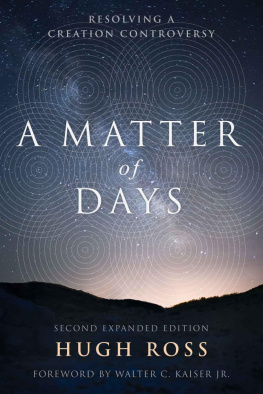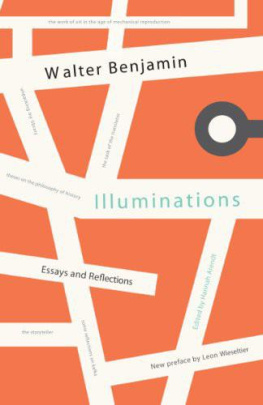WORKS of
ST. BONAVENTURE
Hexaemeron
BONAVENTURE
TEXTS IN TRANSLATION
SERIES
General Editor
Dominic V. Monti, OFM
Volume XVIII
HEXAEMERON
Conferences on the
Six Days of Creation:
The Illuminations of the Church
Works of St. Bonaventure
Conferences on the
Six Days of Creation:
The Illuminations of the Church
Introduction, Translation and Notes
By Jay M. Hammond
Franciscan Institute Publications
Saint Bonaventure University
2018
All rights reserved.
No part of the book may be reproduced or transmitted in any form or by any means,
electronic or mechanical, without permission in writing from the publisher.
2018 Franciscan Institute Publications,
St. Bonaventure University
ISBN 978-1-57659-423-0
E-ISBN 978-1-57659-424-7
Library of Congress Cataloging-in-Publication Data
Library of Congress Control Number: 2018950287
Printed and bound in the United States of America.
Franciscan Institute Publications makes every effort
to use environmentally responsible suppliers and materials in the publishing of its
books. This book is printed on acid free, recycled paper that is FSC (Forest Stewardship
Council) certified. It is printed with soy-based ink.
In memory of my friends
Bernhard A. Asen
Donald Patten
Rest in Peace
Lord, I came from you Most High,
I come to you Most High,
and through you Most High.
Hex., 1.17
IN THE SAME SERIES
WSB I: On the Reduction of the Arts to Theology
WSB II: Itinerarium Mentis in Deum
WSB III: Disputed Questions on the Mystery of the Trinity
WSB IV: Disputed Questions on the Knowledge of Christ
WSB V: Writings Concerning the Franciscan Order
WSB VI: Collations on the Ten Commandments
WSB VII: Commentary on Ecclesiastes
WSB VIII: Commentary on the Gospel of Luke
(3 volumes)
WSB IX: Breviloquium
WSB X: Writings on the Spiritual Life
WSB XI: Commentary on the Gospel of John
WSB XII: The Sunday Sermons of St. Bonaventure
WSB XIII: Disputed Questions on Evangelical Perfection
WSB XIV: Collations on the Seven Gifts of the Holy Spirit
WSB XV: Defense of the Mendicants
WSB XVI: Commentaries on the Sentences: Philosophy of God
WSB XVII: Commentaries on the Sentences: Sacraments
TABLE OF CONTENTS
Ten years after becoming Minister General, and after presiding over his third General Chapter (Narbonne 1260, Pisa 1263, Paris 1266), Bonaventure began a threefold series of Easter season collationes in 1267 at the Franciscan Convent of Cordeliers at the University of Paris. Why? To answer this question, one must understand how Bonaventure responds to the complexities of his historical context via a particular communal practice of reading.
Bonaventure employed the communal practice of collationes to model for his brothers how they should read, not in the grammatical sense, The Hexaemeron models the self-transcending activity of reading within the learning process in an effort to form the identities of both the individual brothers and their communities.
As Part I.2-4 will show, these identities were being contested from both inside and outside the Order. Attacks that challenged the very existence of the mendicants from secular theologians as well as the dominance of Averroistic Aristotelianism within the faculty of Arts, which was making steady inroads into theology, were two controversies at Paris and beyond that contextualize Bonaventures threefold series of conferences. Part I.5 will show that Bonaventures intent, and therefore the content of the three sets of conferences (collationes), is primarily a pastoral and pedagogical effort to lead his fellow brothers to a conversion of heart and mind by modeling the contemplative praxis of reading.
To unpack Bonaventures communal practice of collationes, this Introduction divides into three main parts. Part I explores the Hexaemerons historical context by considering: the collatio genre and its relation to the linked practices of lectio divina and lectio spiritualis, the polemical contexts at the University of Paris in the 1250s and 1260s, and Bonaventures pastoral and pedagogical focus of forming a contemplative subjectivity via the praxis of reflexive reading. Part II then expounds on how collationes 1-3 (the threefold introduction to the Hexaemeron: science, wisdom, understanding) represent an example of the contemplative praxis of reflexive reading, which together provide the substructure of collationes 4-23. This part ends with a table that demonstrates the organizational relationship between the first three conferences and the six proposed visions, four of which Bonaventure delivered. Part III ends with comments about the translation, the redactio and the reportatio versions of the Hexaemeron, and the lists of abbreviations used throughout the translation.
A. THE COLLATIO GENRE AT PARIS
Since collatio simply means gathering (plural, collationes), the term had various meanings.
In earlier monastic communities the collatio was a spiritual conference that was delivered in the evening.
This mendicant practice of a double-sermon finds verification in the statutes of the University of Paris from 1231, which mention that the morning sermons at Paris could be followed by evening collationes.
The Hexaemeron is a product of this practice of collationes within mendicant houses at Paris.
B. LECTIO DIVINA AND LECTIO SPIRITUALIS
The collatio genre helps identify how Bonaventure chose to address his brothers and what he was trying to do for and with his brothers via the communal practice of collationes. As a series of spiritual conferences in line with the older monastic practice, Bonaventure endeavors to teach his brothers by demonstration how to read via the linked practices of lectio divina and lectio spiritualis, these in turn provide a distinct answer to the dual discourse of metaphysics and morals confronting the Franciscan community at Paris. For Bonaventure, a good exegete must be contemplative, and so the collationes teach the brothers how to arrive at proper metaphysics through intellectual contemplation and appropriate morals in affective contemplation. Both are necessary because both the intellectus and the affectus must be fully engaged within the contemplative ascent.
A. THE SECULAR-MENDICANT CONTROVERSY 1250-1259
Bonaventures involvement in the secular-mendicant controversy at the University of Paris in the 1250s provides an important backdrop to the various conflicts of the 1260s, which frame his three sets of collationes in three ways: the question of mendicancy, the issue of the new Arts curriculum that was approved at the height of the controversy in 1255, and the critical significance of the Order maintaining a good character by following the Rule.
On 30 May 1250, the question of mendicancy again became an issue when Innocent IV subverted the uneasy truce at the University of Paris between the seculars and mendicants by issuing Super licentiandis.
The mendicants appealed to the pope.
In July 1253, Innocent IV entered the fray by issuing three letters in support of the mendicant cause. First, Amena flora

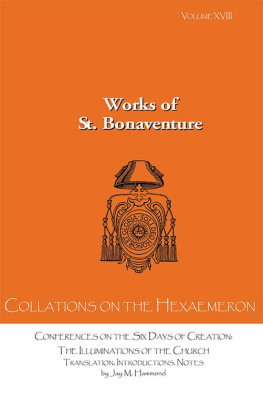
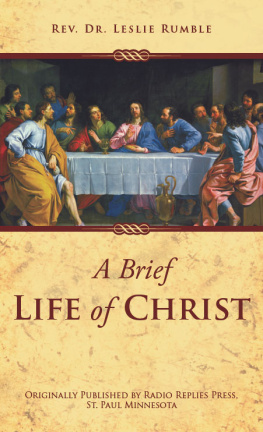


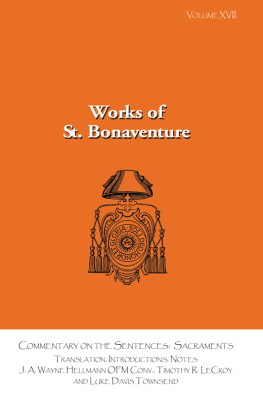

![Saint Bonaventure [Bonaventure - Saint Bonaventure Collection [6 Books]](/uploads/posts/book/134206/thumbs/saint-bonaventure-bonaventure-saint-bonaventure.jpg)


